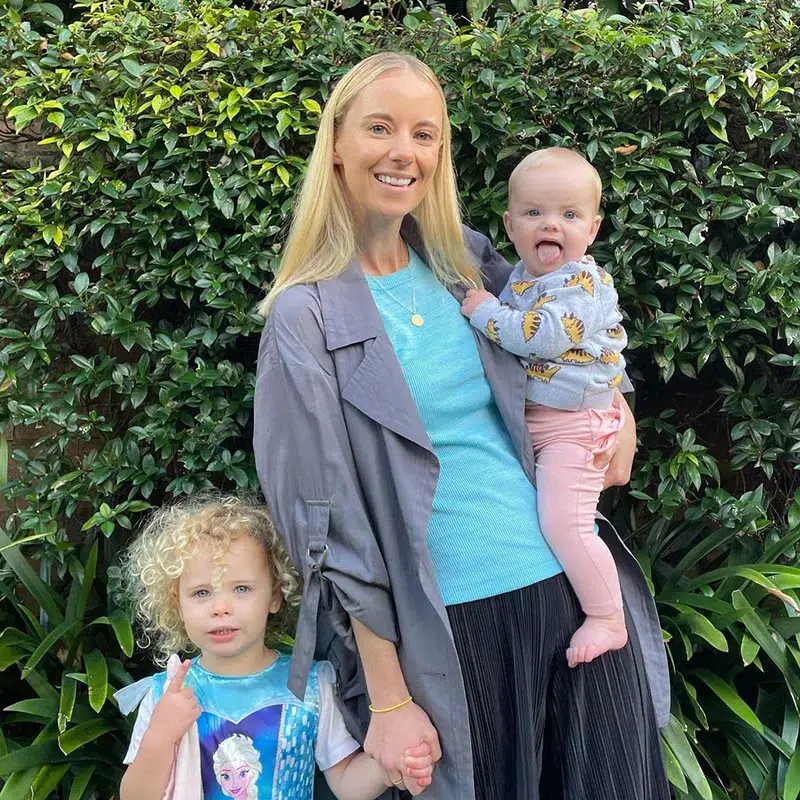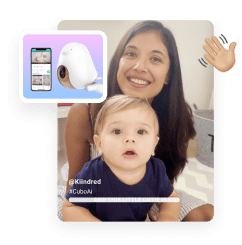Your ultimate safe sleep environment checklist
Red Nose Day has been a part of our nation’s fabric for decades. With the tagline of getting silly for a serious cause, you’d be hard-pressed to find an Aussie who hasn’t heard of the important initiative.
Since 1988 in Australia, Red Nose Day has been held on the second Friday in August, encouraging families across the country to get silly for a serious cause to help raise funds and awareness for Sudden Infant Death Syndrome (SIDS) and stillbirth. Furthermore, Red Nose offers much-needed support for grieving families who have lost their children far too young.
“Because of our supporters, Red Nose has come a long way. Our supporters have helped reduce SIDS by 85 per cent in Australia. I can’t emphasize enough just how huge this is,” Red Nose’s CEO Keren Ludski explains.
“That’s 10,000 little lives saved, and 10,000 families that didn’t have to go through what my family went through. But there continue to be nine families that experience the death of a child every single day. And this is not OK. We need to do everything we can to reduce this number to zero – because just one more family having to lose a child is too many.”
Red Nose Day this year will be held on Friday, August 12. So to mark the important occasion, we’ve compiled the ultimate safe sleep checklist for parents.
Safe sleep environment for infants
“When it comes to sleeping and your newborn, one of the most important things you can do is make sure that the area they are sleeping in is safe. Red Nose has the ultimate guide when it comes to sleep safety for babies,” CPR Kids founder and Paediatric nurse Sarah Hunstead tells us.
“Some of their tips include making sure that the cot is current to Australian standards, ensuring that the mattress in the cot is firm, clean and fits perfectly around the edges, and making sure that there are no gaps. Avoid putting bulky bedding, toys or pillows and also avoid those cot bumpers because they can be a suffocation risk,” Sarah notes.
“And importantly, think about where you’re positioning the cot in the room, make sure that there aren’t any blind or curtain cords or any electrical cords that may actually pose a strangulation risk to your baby.”
A safe sleeping environment, according to Red Nose Australia, “means that all potential dangers have been removed and the baby is sleeping in a safe place. The ideal place for a baby to sleep is in a safe cot, on a safe mattress, with safe bedding, in a safe sleeping place, both night and day.”
An unsafe sleeping arrangement can increase the risk of Sudden Unexpected Death in Infancy (SUDI), including SIDS and fatal sleeping accidents. SIDS remains the most common category of death between one month and one year of age.
See Red Nose’s comprehensive safe sleeping checklist to ensure a safe sleep environment below:
- Baby should be put down to sleep on their back, with feet close to the bottom end of the cot or bassinet
- Head and face should remain uncovered
- The baby should be in a smoke-free environment before and after birth
- A safe bassinet and cot are vital (they must meet Australian Standard AS2172 which will be present on labelling)
- No soft or bulky bedding, such as pillows, bumpers, blankets and toys
- If you are wrapping baby, ensure that you are always doing so safely
- Breastfeed your baby if possible (breastfeeding has been shown to reduce the risk of SIDS)
- A safe bassinet in the parent’s room is recommended for the first 6-12 months
- Never leave your baby sleeping unsupervised in a pram, stroller or bouncinette
- It is also recommended that cots and bassinets are purchased as new for use, and not second-hand
Get tailored content based on your week of pregnancy
By signing up, you agree to receiving our Newsletters. Cancel anytime.



Is co-sleeping safe?
Co-sleeping is when your baby sleeps in your bed next to you. As per Red Nose’s safe sleeping guidelines, the safest place for a baby to sleep is in their own safe sleep space.
While Red Nose does not recommend co-sleeping if you choose to co-sleep it is important to be aware of circumstances that can make this choice unsafe. This includes when you or your partner:
- Are very tired or unwell
- Have consumed alcohol
- Smoke
- Have taken any medication or drugs that may make you sleepy or less aware
- Had a baby that was premature or small for their gestational age
Red Nose recommends following the below guidelines to ensure a safe as possible co-sleeping environment for your baby:
- Place the baby on their back to sleep, never on their tummy or side. Being on their back protects their airways
- Keep all bedding and pillows away from the baby’s face
- Use a safe sleeping bag with the baby’s arms out. Never wrap or swaddle your baby when co-sleeping
- Sleep on a firm and flat mattress, never sleep on a waterbed
- Ensure long hair is tied up and any jewellery removed
- Remove all teething necklaces and dummy chains from baby
- Make sure the bed is far away from the walls so the baby can’t get trapped between the bed and the wall
- If possible, move your mattress to the floor so baby can’t fall off the edge
- Never sleep baby in the middle of both parents, instead create a safe area next to one parent
Many parents love the bond and connection co-sleeping can foster while mums find the close proximity ideal for overnight breastfeeds. Another benefit parents note is the ease with which they can quickly settle their baby when they wake if they are right next to them.
Related Articles
When is it safe to introduce a comforter?
Red Nose recommends the use of a comforter from seven months old. Around seven to nine months, babies become aware of being separated from their parent or caregiver at bedtime and may benefit from the use of a comforter to help calm them and give them security.
However, some babies also might not show affection for any particular toy and that’s ok too. Or, they might prefer random objects around the house, like a wooden spoon or the remote control, and that’s ok too – but these are best left out of their sleep space!
When looking for a comforter, opt for ones that are made out of breathable fabrics like cotton, muslin or bamboo so even if it does cover your little one’s face when they’re sleeping, they’ll be safe.
Remember that soft toys should never be put in your baby’s sleep environment if they are under seven months as they are a suffocation risk.
There’s nothing more beautiful than a sleeping babe but while the scenes can be beyond precious, it’s scary to know that an unsafe sleep environment can pose such a risk to your little one’s life. As parents, we’ll do anything to make sure our babies have a safe sleep environment and arming yourself with the knowledge on how best to protect your child can make a world of difference.
To donate to Red Nose Australia, head here
Related Articles
The 10 most commonly asked baby sleep questions – answered!
3 things you need to know about your newborn’s sleep
Signs your baby is ready to transition to a sleeping bag

Bella Brennan Follow +
Bella is a writer and editor with over a decade of experience in women’s publishing and digital media. In her spare time, she loves making up dances to the Wiggles with her two little girls, swimming in the ocean and trying to sneak away from her family for a cheeky nap.




